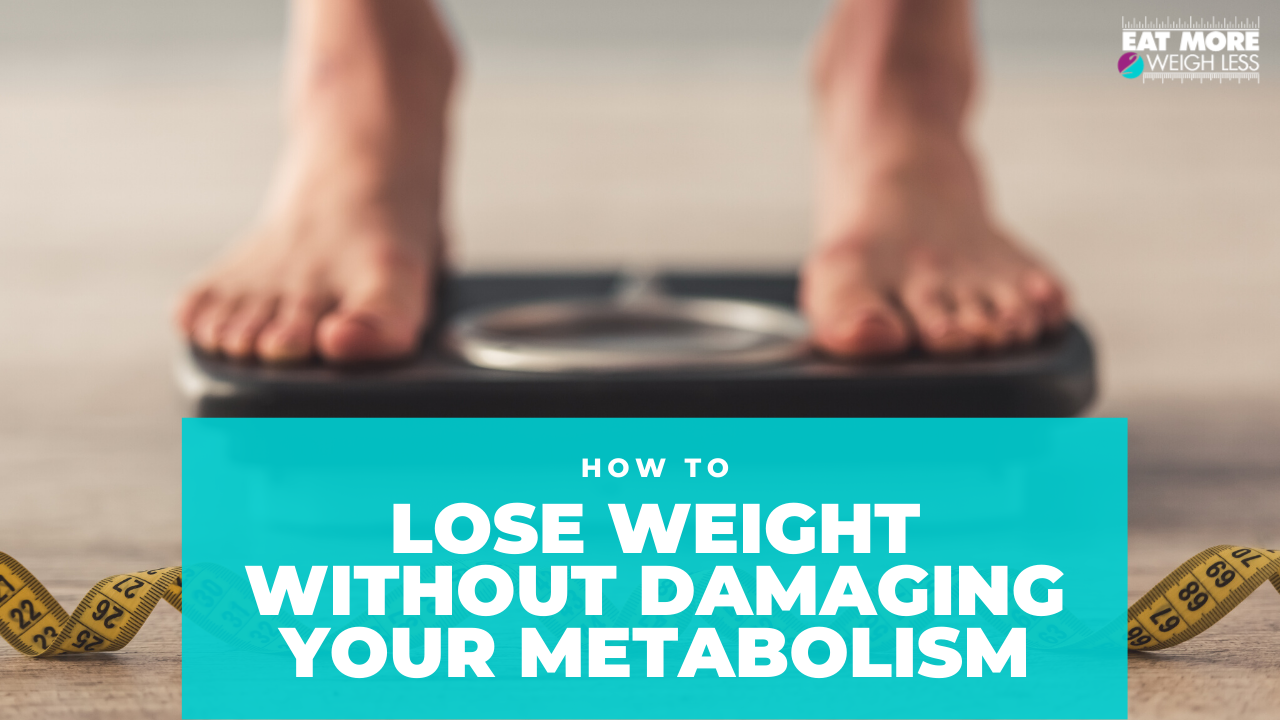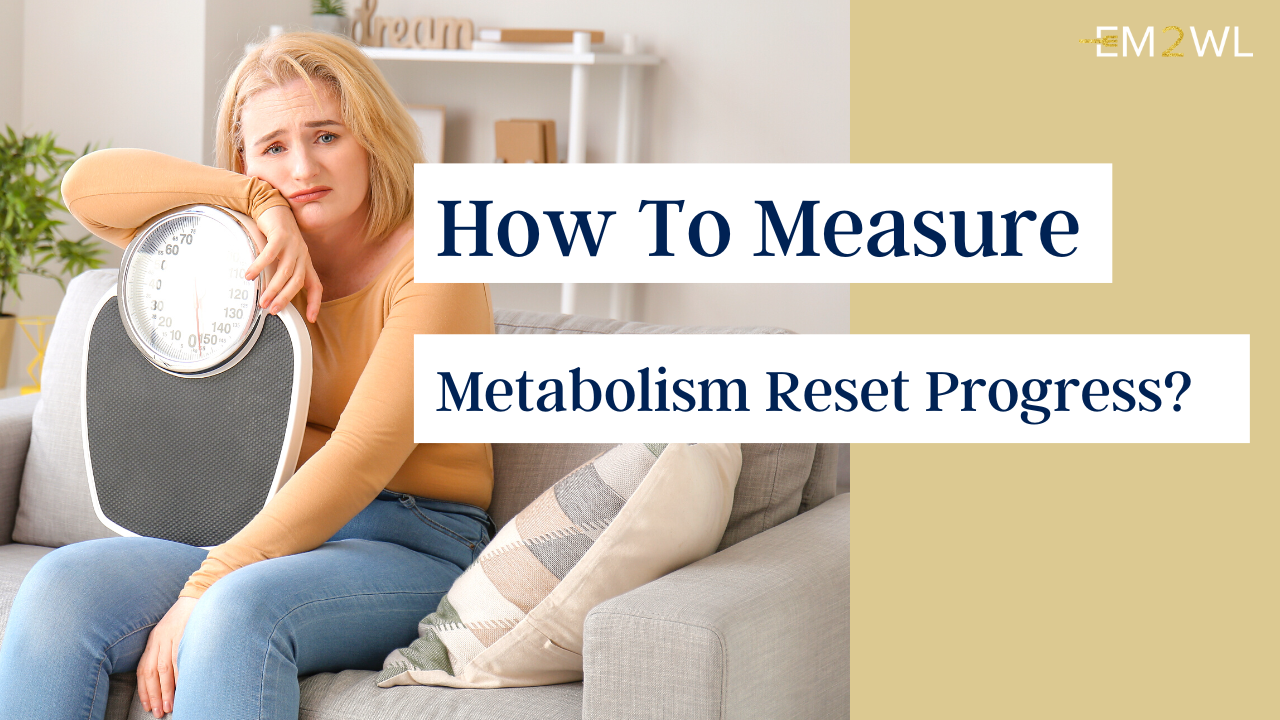Q: I feel perfectly fine eating at 1250 cals. The weight is coming off, I’m happy w/my progress, and I don’t feel “starved” at all. I hear you and others saying a lot about the body going into “starvation mode” or their metabolism being “damaged” by eating less, so they get stuck there. I guess I understand all that, but I’m just wondering if that even applies to me, since I’m perfectly happy w/the way things are. Even if I get “stuck” at this cal level, I mean, I’m already used to it anyway. What’s the big deal? And where does the whole “starvation mode” concept come from? Is there really backing to that, or just one of those things that got tossed around enough until it became fact? I just don’t get into following trends, and “eat less/workout more” has been around forever, and is tried and true…..
A: Instead of tossing all of usual shenanigans at you on how if you hit a plateau, you’ll have to lower cals even further, blah blah, I’ll leave that ramble for another time (since you’ve heard it all before anyway, I typically don’t say anything “new” lol). What I am gonna do is address your most pressing part of that question (which is an EXCELLENT question, btw) by telling you a story. Then, as the disclaimer usually goes, the rest is up to you to do what you feel is best for your body….
Based on a true story…

recruitment ad read something like “Will you starve, so that they don’t have to?” The study was to help us to understand what happened to humans under the circumstances of being food deprived, yet having to continue on w/everyday activities. The results were published in a two-volume study titled the The Biology of Human Starvation (Minneapolis: University of Minnesota Press, 1950). There has never been, and never will be a study done like it again, and you will see why…
During this study, 40 able bodied, well-educated, socialized, and healthy men were put on a caloric restrictive diet that would resemble that of the countries being hit hard by the war. This diet was set up to have them lose 25% of their body weight, approximately 2.5 lbs per week. Daily exercise consisted of walking 3 miles/day. They all ate only twice a day. The diet would take approximately 3 months to complete, and would then be followed by a 3 month rehabilitation, where they took their calories back up to maintenance, following specific nutritional guidelines (as far as their vitamin/mineral contents, etc). Results were closely monitored & chronicled during the 6 months of the experiment, and up to a year after resuming to their normal lives/eating habits.
Some of the results found during their weight loss period:
- their physical endurance dropped by half
- their strength was reduced by about 10%, and their reflexes became sluggish — with the men initially the most fit showing the greatest deterioration
- BMR declined by 40%
- heart volume shrank about 20%
- their pulses slowed and body temperatures dropped
- complaints of feeling cold, tired and hungry; having trouble concentrating; of impaired judgment and comprehension; dizzy spells; visual disturbances; ringing in their ears; tingling and numbing of their extremities; stomach aches, body aches and headaches; trouble sleeping; hair thinning; and their skin growing dry and thin.
- sexual function and testes size were reduced and they lost all interest in sex (we’re talking about men, here…that’s a pretty big deal).
They had every physical indication of accelerated aging.
- became nervous, anxious, apathetic, withdrawn, impatient, self-critical with distorted body images and even feeling overweight, moody, emotional and depressed
- social and family relationships suffered
- They became obsessed with food, thinking, talking and reading about it constantly; developed weird eating rituals; began hoarding things; consumed vast amounts of coffee and tea; and chewed gum incessantly (as many as 40 packages a day). Binge eating episodes also became a problem as some of the men were unable to continue to restrict their eating in their hunger.
(Whew, I almost feel like somebody followed me around documenting my dieting days when I read those last few….)
Upon returning to their normal eating habits, the men seemed to have out of control eating, feeling like they could never get enough. It took many of them five months or more before things finally begin to level out (metabolism/energy levels) and they
started to regain normalcy to their eating (though some continued to have an eating disorder frame of mind when it came to the food, for even longer). Strength levels took more than three months to return to normal. The studies found that the men needed to over eat in order for this rehabilitation to take place, because the body had been in such short supply of nutrients needed, it essentially needed an “over-dose” for months, in order to get it back to normal. In lieu of the over eating then men had to gain 10% more than their original weight back, but the weight came back in different proportions. The regained weight was mostly fat, and their lean body mass recovered at an extremely slower pace. With unlimited food and unrestricted eating, their weights plateaued and finally, about 9 months later, most had naturally returned to their initial weights without trying.
Dr Keys (who performed the study) concluded this regarding why the “over-eating” was a necessary evil in BMR rehabilitation:
“Our experiments have shown that in an adult man, no appreciable rehabilitation can take place on a diet of 2,000 calories a day. The proper level is more like 4,000 kcal daily for some months. The character of the rehabilitation diet is important also, but unless calories are abundant, then extra proteins, vitamins and minerals are of little value.” (<<<emphasis, mine)
So essentially, these men had to eat double the amount of food to make up for the newly deemed “starvation mode” that they’d just subjected their bodies to. And note that they needed FOOD, supplementation alone, without the extra calories, was not enough to rebuild their BMR. Of course the study goes much deeper than that, (as I said it was a two-volume study) but I’m just pulling on the gist of it to give background on where the “starvation mode” theory came from.
So…..what does this have to do with us now? We live in America, after all, one of the richest, well fed countries in the world. There is no way that we would “starve” ourselves to that extent, even on the lowest calorie diets, right? Just how little were these guys eating?
1570 calories/day*
That’s a pretty generous allowance, by today’s standards, eh?
*they were only allowed 30g of fat intake, daily, which again shows the importance of keeping essential fats in your eating regimen, even when “dieting”
For more information on this super-intriguing study (at least to me) feel free to just google “The Minnesota Experiment” or “Minnesota Experiment Sam Legg” (google images if you’re interested in a pic of one of the men) or read The Biology of Human Starvation (if you’re really a research geek, like me)
ETA: Many people have commented about the fact that these were “healthy and fit men,” and that “people were a lot more active ‘in those days.’ ” However, we need to remember that this phrase speaks also of their mental health (as it was also under observation), and they were healthy and fit for men at that point in time. The Industrial Revolution had already come and gone, and people in general, were already a lot less active than previous generations. Let’s not assume that they were out on farms somewhere working up a sweat. The study stated that their exercise plan was a 3 mile walk/daily. Nothing strenuous. It is also worth noting that (in our time) a person that is up to 30 lbs heavier than they would like to be can be declared “healthy and fit” by their doctor. Go to any “healthy body weight calculator” and see the wide range of weight that is considered in the “healthy” range for that persons height. This does not mean that the person will not want to lose weight, even though they are “healthy”.
ETA (2): It is also worth noting that although these men all lost weight originally, they ALL plateaued by the 20th week w/no further weight loss for the duration of the study. As I stated, please do yourself a favor and research it for more in depth info, this was just a truncated version for this particular question of “where did the concept come from?’ The research is out there, but diet plans are the mainstream, so you have to search for anything outside of the box.
Discover more from Eat More 2 Weigh Less
Subscribe to get the latest posts sent to your email.




I am a little confused. I saw that the “restriction” part of the study last 3 months, but then in the ETA it said that they didn’t lose weight after 20 weeks. Were they expected to lose more weight after that phase had ended at 3 months? Thanks for clarifying; I definitely may have missed something lol! It was super interesting though. Thanks!
I followed a link called Metabolism Reset and it took me to Starvation Study. I think you out to at least SAY what the Metabolism Reset is.
Hey Laurel!
So sorry for the confusing links. The Starvation Study explains the “story” of the reset so that one can understand the background and why it’s needed. Perhaps our metabolism reset guide will help answer your questions?
Let us know if there’s anything else we can do to help!
~Kiki
This reminds me of the Ethan Sims overeating study done here in Vermont on prisoners, they found that overfeeding didn’t cause all the weight gain issues they assumed it should.. That too is a very interesting read..
Now that does sound interesting. Will definitely be checking it out. Thanks for the suggestion!